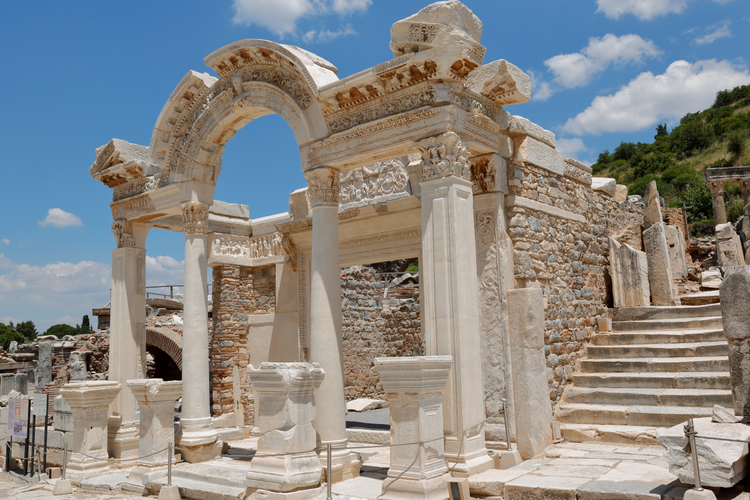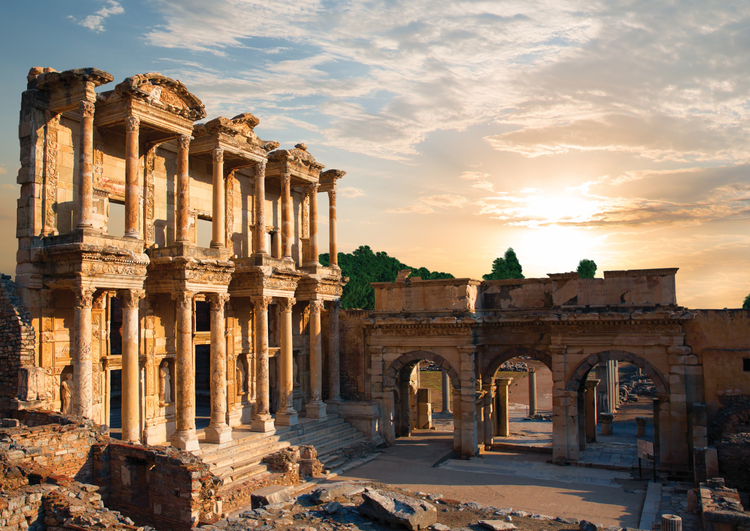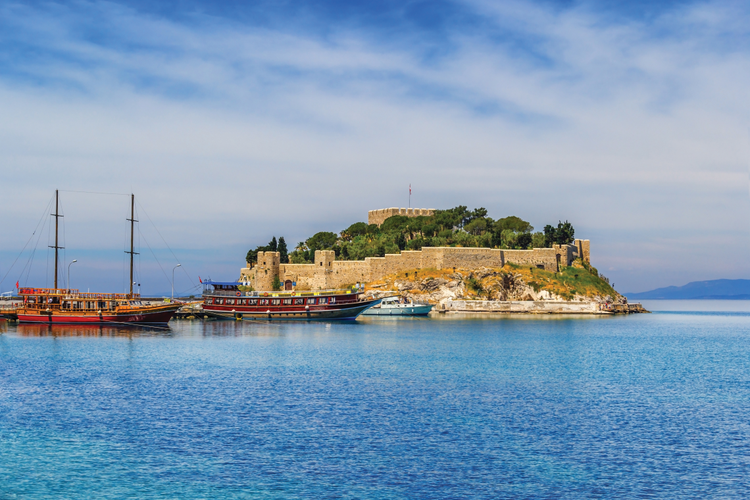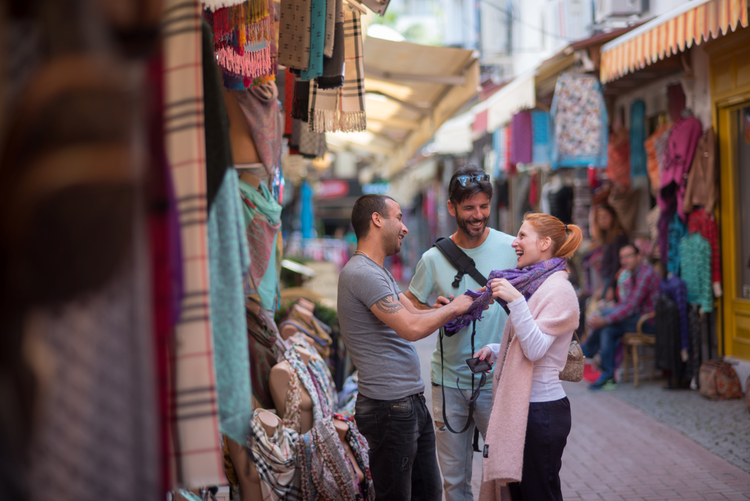
Coastal view of Kuşadası, Turkey with vibrant waterfront and scenic surroundings, a popular gateway to Ephesus on Eastern Mediterranean cruise itineraries.
Where your odyssey to Ephesus begins
Cruises to Kusadasi
Highlights

Ancient ruins of Ephesus near Kuşadası, Turkey, showcasing classical architecture and rich history on Eastern Mediterranean cruise excursions.
Ephesus, a World Heritage Site
A very long time ago, Ephesus was settled by the Lydians and Carians who worshipped the Anatolian goddess Cybele. By the tenth century BC, the Greek Ionian colonists arrived at what was then a seaside settlement, and they combined the cult of Cybele with their own veneration of the goddess Artemis—their version was a mysterious fertility figure depicted in art with many breasts. Her cult was very popular and Ephesus was too, until the Lydian king Croesus swept in and destroyed it in 550 BC, rebuilding the city near the temple of Artemis where it remained until 301 BC and the advent of Alexander the Great’s general Lysimachus—who saw that the port was silting up, so he moved the city yet again. By the time the Romans rolled in Ephesus had well over 200,000 inhabitants, making it the banking and trading center of the east and the biggest city in Anatolia by far.

Ancient ruins of Ephesus near Kuşadası, Turkey, featuring classical columns and archaeological remains, a top cultural attraction on Eastern Mediterranean cruises.
Ephesus main sights
While there are remnants from many periods of history at Ephesus today, the vast majority of the ruins you see today are Roman. Fortunately, they are also the most spectacular, and many are surprisingly intact. You could stroll for hours along the ancient streets and still not see everything for as the famous author Mark Twain wrote of Ephesus, “Go where you will about these broad plains and you find the most exquisitely sculptured marble fragments…and protruding from the ground, or lying prone upon it, are beautiful fluted columns of porphyry and all precious marbles; and at every step, you find elegantly carved capitals and massive bases, and polished tablets engraved with Greek inscriptions. It is a world of precious relics.”
The most famous ruin at Ephesus is that of the Library of Celsus, built-in 125 A.D. Its imposing marble façade, which was faithfully reconstructed, is decorated with botanical-themed carvings and portrait statuary, and the building faces east to maximize the morning light. Also iconic is the Temple of Hadrian, the regal monument with the signature semi-circular tympanum (decorative wall entrance) with a carved female figure, possibly Medusa, on the south side of Curates Street that once connected the Library of Celsus with the Gate of Hercules. Your Ephesus list could also include the ancient open-air theater (it could seat 25,000 spectators), the Odeon (a smaller theater), the Gymnasium of Vedius and the Basilica of St. John. The ruins also include public toilets and bath complexes from the fourth century BC, and even a brothel.

Scenic view of Kuşadası, Turkey with a historic mosque, coastal fortress, and Pigeon Island, a cultural and natural highlight on Eastern Mediterranean cruise itineraries.
Fortress Mosque and Pigeon Island
With its huge front door and decorative interior, you might at first mistake the Fortress Mosque, also known as the Kaleici Camil, for a palace. It is one of the most impressive landmarks in Kuşadası, reflecting the classical Ottoman architecture and spanning an area of over 1800 square meters. The mosque was built by Okuz Mehmet Pasa in the 17th century and features stunning oil paintings and stained-glass windows, as well as striking columns and a rather large dome. One of the most beautiful spots in Kuşadası is Güvercinada or Pigeon Island, attached to the mainland by a causeway and home to a Byzantine fortress built to repel pirates and later rebuilt by Barbaros Hayrettin Pasha, a famous admiral of the Ottoman Navy. The historical structures blend with fun shopping in the Kaleiçi quarter.

Colorful stalls and lively atmosphere at the Grand Bazaar in Kuşadası, Turkey, offering local crafts and souvenirs on Eastern Mediterranean cruise visits.
The Grand Bazaar and Ladies Beach
One of the largest bazaars in Turkey, Kuşadası’s Grand Bazaar is a shopper’s paradise situated in the center of town just in front of the harbor and is open most days, usually from early in the morning until midnight. You can find a huge variety of treasures, from clothes, sunglasses, handbags and jewelry to rugs, furniture and even belly dancer outfits. There’s also the Orient Bazaar, an open-air market located in the lanes next to Grand Bazaar. For a bit more sun, hit the beach. Known in Turkish as Kadinlar Denizi, Ladies Beach was segregated for just females during the Ottoman period but now everyone can enjoy its golden sand, calm waters and water sports facilities. Its palm tree-lined promenade is also a delightful spot for shopping or simply watching the sunset.